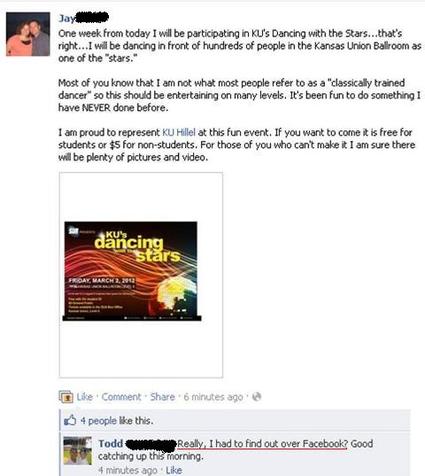Any “Sex and the City” fans out there? Me – guilty as charged. Skip down to the paragraph that begins with “in talking to” if you’d prefer to avoid the fabulousness that’s about to ensue…
The following clip does an especially great job of illustrating a point I’ve been thinking about a lot lately. (Be forewarned there is some naughty language sprinkled here and there.)
In talking to both individuals and groups about social media, many colleagues and I tend to stress that “it’s just a tool.” At the same time, we all know full well that social media is much more than that.
Here’s an analogy; let’s talk about food. Here in the U.S., eating is primarily done with forks and knives. Those are our tools and we don’t think too much about it. But what happens when those tools are traded out for a row of six different forks, or a pair of chopsticks, or a communal piece of flat bread? The cultural implications of the tools with which we eat are suddenly brought to the forefront.
Change the tool, and (to some extent) you change the culture. Or, similarly, to quote Marshall McLuhan, the medium is the message.
To touch briefly back on the aforementioned saga, Carrie later goes on a rant about how a break-up should ideally be handled. She stresses that the message of ending a relationship should be delivered in a way that honors what the two people had together. Essentially, the message and the medium should match.
I’m confident everyone reading this post has had moments like this – moments in which we’ve questioned what is appropriate to share (or find out) via Facebook, or over email, or in a text. The screenshot below illustrates a very mild example.
How can an organization keep up and be successful in this environment? I’ll give you my thoughts on this in a follow-up post. But now, I’d love to hear yours. Have you ever had a Post-It moment? What are your impressions of the relationship between the medium and the message? What are the implications for Jewish organizations in the connected age?
*To further complicate the matter, “social media” is not some monolithic beast. The term refers to a field, a loose configuration of platforms and spaces that allow for certain kinds of interaction. Each space has developed a culture of its own. There are behavioral and conversational norms that are perfectly acceptable in one space that would seem quite odd in another. For instance, sharing pictures of your breakfast has become fairly acceptable on Facebook; doing so in LinkedIn may not go over so well. (But now I’ve gone off about food again…)




 RSS Feed
RSS Feed